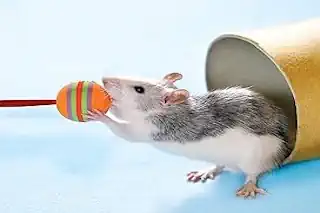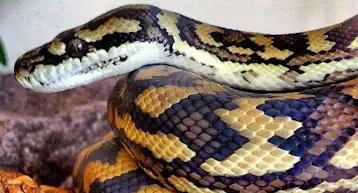How to Train Lizards and Snakes: A Beginners Guide for Reptile Enthusiasts
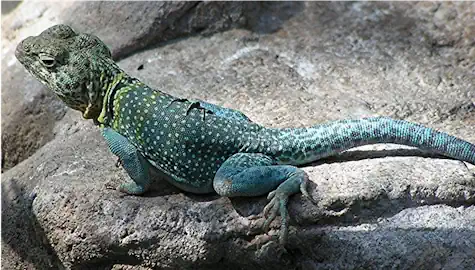
Introduction
Training lizards and snakes might sound like an unusual endeavor, but it’s an incredibly rewarding one. Not only does it strengthen and develop the bond between you and your reptilian companions, but it also ensures their safety and well-being. Whether you’re a seasoned reptile owner or a newbie just diving into the fascinating world of reptiles, understanding how to train your pets can make a world of difference.
Most Popular Lizard and Snake Species for Pets
Choosing the right species is crucial for a successful and enjoyable experience with your reptilian friends. Here are some of the top lizard and snake species that are popular among pet owners:
Top 5 Lizard Species
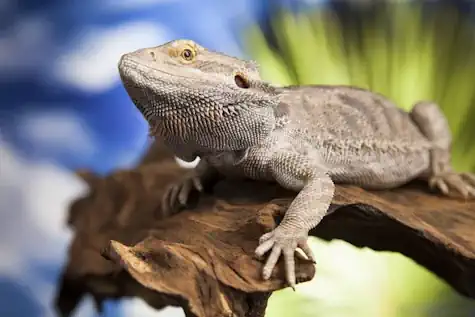
Bearded Dragon: Known for their calm demeanor and ease of handling, bearded dragons are affectionate and easy to train.
Leopard Gecko: These small, nocturnal lizards are low-maintenance and have a unique, fascinating appearance.
Blue-Tongued Skink: With their striking blue tongues and friendly nature, skinks are great for families and beginners.
Crested Gecko: Crested geckos, with their charming eyelashes and gentle temperament, are perfect for those looking for a low-stress pet.
Green Anole: These vibrant green lizards are lively and relatively straightforward to care for, making them an excellent choice for new reptile enthusiasts.
Top 5 Snake Species
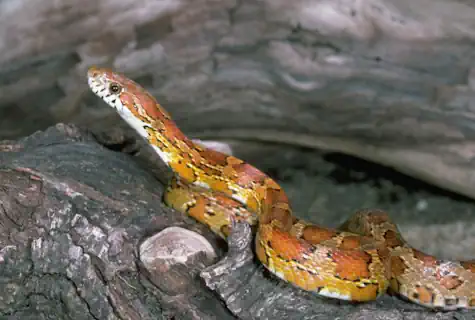
Corn Snake: Known for their docile nature and ease of care, corn snakes are a fantastic introduction to snake ownership.
Ball Python: Ball pythons are famed for their gentle disposition and manageable size, making them a popular choice for beginners.
King Snake: With their striking patterns and curious nature, king snakes are friendly and relatively easy to train.
Garter Snake: These small, adaptable snakes are nonvenomous and make excellent pets for those new to snake keeping.
Rosy Boa: Rosy boas are slow-moving, gentle snakes that adapt well to captivity and are easy to handle.
By choosing from these popular species, you’re more likely to have a rewarding and enjoyable experience in training and caring for your new lizard or snake companion.
Basic Training for Lizards and Snakes
Understanding Reptile Behavior
Before diving into any training techniques, it’s essential to understand your reptile’s natural behavior. Lizards and snakes are fundamentally different from mammals; they don’t respond to commands or affection in the same way humans do. Observing their body language and behaviors will give you insights into their comfort levels and readiness for training.
Top 5 Lizard Behaviors to Understand
Basking: Lizards are ectothermic, meaning they rely on external heat sources to regulate their body temperature. You’ll often see them basking under a heat lamp or in a sunny spot. This behavior is crucial for their digestion and overall health.
Head Bobbing: Many lizards, especially males, bob their heads as a form of communication. This can either be a territorial display or a mating ritual, so understanding the context is key to interpreting this behavior.
Tail Whipping: When a lizard feels threatened, it may whip its tail as a defensive mechanism. This behavior usually signals that the lizard is feeling stressed or threatened and needs space.
Burrowing: Digging and burrowing are common behaviors, especially for species like bearded dragons and leopard geckos. This can indicate they’re seeking a cooler spot or feeling the need to hide and feel secure.
Shedding: Lizards shed their skin to grow, but unlike snakes, this usually happens in patches. Frequent shedding can indicate good health and growth, but difficulty shedding (dysecdysis) can signal health problems.
Top 5 Snake Behaviors to Understand
Tongue Flicking: Snakes frequently flick their tongues in and out. This behavior is used to gather scent particles from the air and helps them understand their environment. It’s a sign of curiosity and exploration.
Coiling: When a snake coils up, it can serve multiple purposes. Coiling can be a resting state, a defensive posture, or preparation for striking. Observing the tightness and context of the coil can give you clues about how your snake is feeling.
Hissing: Hissing is a defensive behavior used to warn potential threats. When a snake feels threatened or cornered, it may hiss to signal its discomfort and to deter predators or intruders.
Rubbing: Snakes often rub against rough surfaces when they are about to shed their skin. This behavior helps them loosen and remove the outer layer of old skin. Frequent or vigorous rubbing can be a sign that shedding is imminent.
Constriction: Constricting is a natural behavior used by many snakes to subdue prey. Outside of feeding, a snake wrapping around objects or your hand can be a sign of them feeling secure and anchored but always monitor closely to ensure it’s not too tight to cause harm.
Understanding these behaviors will help you interpret your snake’s needs and emotions, eventually creating a safer and more trusting relationship between you and your slithery friend.
Training Basics for Lizards and Snakes
Training your reptile is all about patience, consistency, and creating a stress-free environment. Here are some fundamental training basics to get you started.
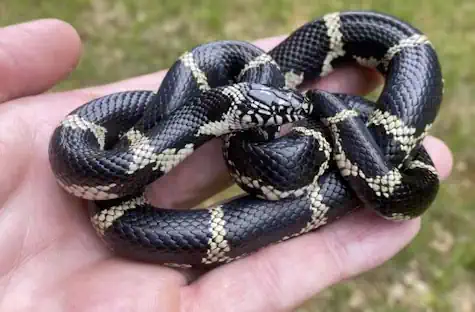
Positive Reinforcement
Just like with other animals, positive reinforcement is key when training lizards and snakes. Use treats they love, whether it’s mealworms for lizards or thawed rodents for snakes, to reward desired behaviors. Remember, timing is crucial – offer the treat immediately after they exhibit the behavior you’re aiming for, to create a strong association.
Consistent Routines
Reptiles thrive on routine, and consistent training sessions can help them feel more comfortable and willing to learn. Set aside a specific time each day for training. Ensure that the environment is quiet and calm to minimize distractions and stress.
Gentle Handling
Frequent, gentle handling can help acclimate your reptile to human interaction, making training easier. Start slowly, allowing them to get used to your presence and touch. Avoid sudden movements and always support their body properly to make them feel secure.
Target Training
Target training involves using a stick or other object for the reptile to follow or touch. This method is particularly effective because it engages their natural curiosity and hunting instincts. Begin by rewarding them with a treat when they show interest in the target, gradually increasing the criteria for a reward as they get more comfortable.
Patience and Observation
Training reptiles requires a lot of patience. Progress might be slow, and it’s important to observe your reptile’s reactions and adjust your approach accordingly. If they seem stressed or scared, take a step back and give them some time to relax.
Remember, the goal of training is to build a trusting relationship with your reptilian friend, ensuring they are happy and well-adjusted. Enjoy the learning process and celebrate small victories along the way!
Tips for First-Time Reptile Trainers
Start Slow: Begin with simple tasks and gradually increase the complexity.
Be Patient: Reptile training takes time; don’t rush the process.
Stay Consistent: Regular training sessions yield the best results.
Observe and Adapt: Always watch your reptile’s reactions and adjust your techniques as needed.
Advanced Training Techniques
For those ready to take their reptile training to the next level, here are some advanced techniques to try:
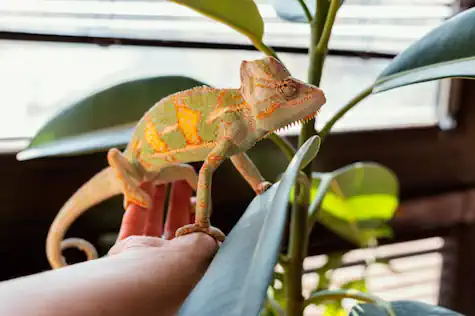
Clicker Training: Introduce clicker training to bridge the gap between a desired behavior and a reward. This technique involves using a small device that makes a clicking sound when pressed, marking the precise moment the reptile performs the correct action.
Station Training: Train your reptile to go to a specific place, such as a heat mat or a designated spot in their enclosure. This can be particularly useful for safe handling and routine checks.
Leash Training: For more adventurous lizards, such as iguanas, you can introduce leash training. Start by familiarizing them with a harness and gradually introduce gentle walks around a secure area.
Scent Trails: Lay down scent trails for snakes using a cotton swab dipped in a safe scent they enjoy. This naturally engages their tracking instincts and can be used to guide them to a specific location or behavior.
Shape Recognition: Some lizards can be trained to recognize and respond to different shapes and colors. Use this technique to teach them to navigate a simple obstacle course or identify objects.
Agility Training: Create a mini agility course with hurdles, tunnels, and climbs to physically and mentally stimulate your reptile. Ensure the course is safe and suitable for their size and species.
Interactive Play: Use toys or safe objects to stimulate play and interaction. This can help reduce stress and provide mental enrichment. Always supervise playtime to ensure it’s safe and enjoyable.
These advanced techniques not only provide mental stimulation and physical exercise but also strengthen the bond between you and your reptilian companion.
Training Specific Behaviors
Litter Training Snakes
Believe it or not, you can train snakes to use a designated area for their bathroom needs. Start by observing their natural habits and placing a litter box in their preferred spot. Gradually move the box to a more convenient location, rewarding them each time they use it. Consistency is key, and soon your snake will be potty trained to use the litter box regularly.
Teaching Lizards to Come When Called
Training a lizard to come when called requires patience and repetition. Choose a specific call or sound, and use it consistently during feeding times. Reward your lizard each time they respond to the call. Over time, they’ll start associating the sound with food and will come to you when called. Associating sound with their feeding response can be a very powerful and lasting connection for your pet.
Common Challenges and Solutions
Overcoming Fear and Aggression in Reptiles
Reptiles can sometimes exhibit fear or aggression, especially if they feel threatened. Building trust is crucial. Start with short, gentle handling sessions, gradually increasing the duration as your reptile becomes more comfortable. Always remain calm and patient, as sudden movements or loud noises can exacerbate their fears. These basics apply to animal training for all types of pets.
Managing Stress During Training
Reptiles can easily become stressed, which can hinder training progress. Ensure their environment is conducive to stress-free living—adequate hiding spots, proper temperature and humidity levels, and minimal disturbances. If your reptile shows signs of stress during training, take a break and resume the task when they’re more relaxed.
Training Mistakes to Avoid
Common Errors That Can Hinder Progress
Avoid common pitfalls such as inconsistent training schedules, using punishment instead of positive reinforcement, or expecting immediate results. Trying to train more advanced tricks before they have learned to perform simple behaviors will also be frustrating for you and them. Reptiles need time to learn and adapt, so patience and consistency are paramount.
Adjusting Training Techniques for Different Reptile Species
Different species may respond differently to various training techniques. Research the specific needs and behaviors of your reptile species and adjust your training methods accordingly. What works for a bearded dragon may not be effective for a ball python.
Conclusion
Training lizards and snakes is not only possible but also deeply rewarding. It enhances the bond between you and your pet, ensures their safety, and makes handling easier. By understanding their behavior, using positive reinforcement, and being patient and consistent, you can achieve remarkable results.
We encourage you to start training your reptile today and share your success stories with our community. If you have any questions or need further tips, don’t hesitate to reach out. Happy training!
Frequently Asked Questions (FAQ)
How long does it take for training reptiles?
Training a reptile can vary greatly in duration depending on the species, the individual animal, and the specific behaviors you are trying to teach. Some reptiles may learn certain tasks in a few weeks, while others might take several months. Patience and consistency are key to successful training.
What should I do if my reptile refuses to participate in training?
If your reptile is not responding well to training, it’s important to assess their environment and overall health. Ensure they are comfortable, stress-free, and not experiencing any health issues. Sometimes taking a break and resuming training later with a positive and calm approach can make a big difference. If they can tolerate handling they will be able to learn other behaviors.
Can all reptiles be trained?
While not all reptiles will respond to training in the same way, many can learn various simple behaviors with the right techniques and consistency. Species such as bearded dragons, iguanas, and ball pythons for example, often show good responses to training. It’s essential to understand the specific needs and natural behaviors of your reptile species.
What kind of rewards should I use for my reptile?
Rewards can vary based on your reptile’s preferences. Common rewards include their favorite food treats, gentle praise, or environmental enrichments like a favorite toy or area to explore. Always ensure that treats are safe and healthy for your specific reptile. Food rewards are very effective but only while the reptile is hungry. Some species only eat food in very limited intervals. This can make treats as a training reward difficult for regular training sessions.
Is clicker training safe for reptiles?
Yes, clicker training is a safe and effective method for several species of reptiles. It helps create a clear connection between the desired behavior and the reward. The sound of the clicker is neutral and doesn’t usually startle reptiles, making it an excellent tool for positive reinforcement.
Can I train my reptile to be more social?
Most reptiles are generally more solitary than social animals, training can help them become more accustomed to handling and interaction. Positive experiences and gradual introductions can make them more comfortable with human interaction, thus reducing stress and strengthening the bond with their owner.
What signs indicate that my reptile is stressed during a training session?
Signs of stress in reptiles can include hissing, biting, hiding, lack of appetite, and unusual lethargy or hyperactivity. If you observe these signs, it’s crucial to pause the training and allow your reptile to relax. Ensure their habitat is conducive to a stress-free environment before resuming training.
How often should I train my reptile?
Short, daily training sessions are more effective than infrequent, extended ones. Aim for consistent, manageable sessions – around 10-15 minutes – to keep your reptile engaged and to reinforce learned behaviors without overwhelming them. As they become more intelligent (or better trained) avoid the temptation to lengthen the training sessions. If 15 minutes works, stick with 15 minutes. You will get a sense of their brain capacity for learning as your relationship grows.
Can older reptiles be trained, or is it best to start when they are young?
Reptiles can be trained at any age, though younger reptiles often adapt more quickly to new behaviors. However, with patience and the right approach, older reptiles can also learn some tricks and benefit from training. The key is to be consistent and positive in your training methods.


